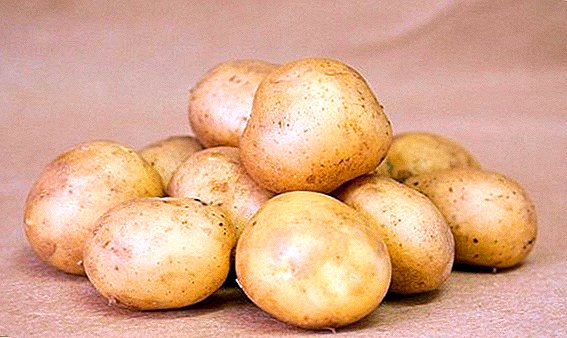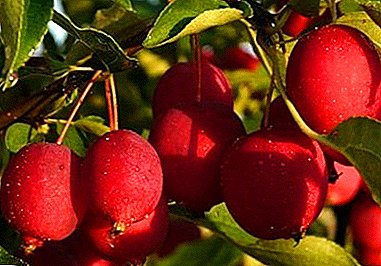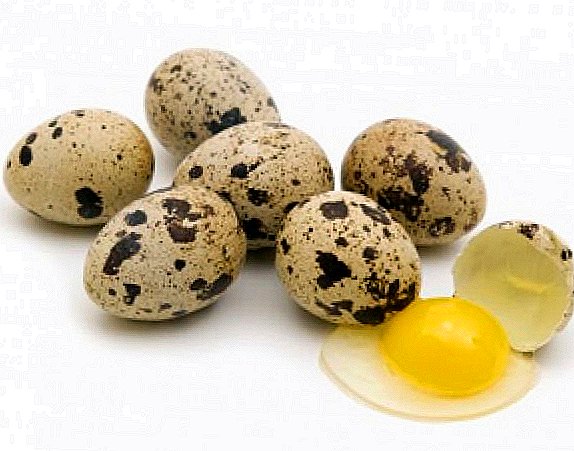 Euphorbia is considered the largest genus of the Euphorbia family: some sources claim that it includes 800 species, others - 1600, and still others - about 2000. This plant can be grown not only outdoors, but also indoors. An example would be Euphorbia Mil, or, as it is also called, beautiful, brilliant, euphoric Mil. Consider the principles of caring for him at home.
Euphorbia is considered the largest genus of the Euphorbia family: some sources claim that it includes 800 species, others - 1600, and still others - about 2000. This plant can be grown not only outdoors, but also indoors. An example would be Euphorbia Mil, or, as it is also called, beautiful, brilliant, euphoric Mil. Consider the principles of caring for him at home.
Description of the beautiful milkweed
Euphorbia is represented in nature by annual and perennial grasses, shrubs, and sometimes even small trees. Next, we analyze what the spurge Mil looks like - one of the most charming representatives of the genus.
Familiarize yourself with the main types of milkweed, in particular with Pallas euphorbia, cypress, white-milk euphorbia and euphorbia.
Shoots and leaves
Its stalk is rather thick, sometimes about 20 cm. The leaves are ribbed, with three faces, at the ends there are thorns. As a rule, leaves fall quickly. 
Milkweed flowers
This species is most beautiful during the flowering period (from spring to autumn): at this time its shoots are covered with many flowers. True, they are a little nondescript - yellow and small.
And real jewelry of milkweed is bracts: pink, red, white, yellow. Their size and color saturation mainly depends on the correctness of the treatment of the flower.
Video: Euphorbia Mil how to care in home
Growing conditions
If you decide to grow this beauty at home, let's look at the main points that are important for its proper growth and development.
Important! Leaves from their slices exude poisonous milky sap. It is better to protect children from contact with the plant, because of the careless handling of it you can earn a burn or irritation.
Lighting
Spurge likes a bright light very much, so the southern window in the room would be an ideal option for him. In winter, it is recommended to use artificial lighting.
Only with enough light a flower will be healthy and lush. In the shade, he will wither, his stems stretch, become thin, pale, and spurge will stop blooming. 
Air humidity and temperature
The flower requires moderate humidity.
Spurge likes heat, so in cold weather the temperature in the room should not fall below + 14 ° C. In a cool place, he will be comfortable only with very good light and high temperature of the earth, for example, near the battery, heater.
Soil for Milkweed Mile
This kind of soil is unpretentious to soils, it is not bad for him even in a simple vegetable garden. But it is better to take a mixture for succulents or a substrate of sand, turf and leaf soil (1: 1: 2).
Succulents are plants that do not require frequent watering. As well as spurge, succulent plants are also referred to as: aichrizone, echeveria, agave, aloe, echinocactus, nolin, slipway, kalanchoe and fatmeal.
How to care for a plant
Now tell you what care is needed for this beautiful flower.
Watering
Often there is no need to water the plant, the ground must have time to dry out. But still do watering abundant, and use soft water.
Winter is a dormant period for milkweed, so at this time it is better to reduce watering, but not too much, especially if the flower is standing near the battery.
With a long re-drying of the earth, it drops the yellowed leaves, which significantly impairs its appearance. But if you return to his usual care, he will soon recover. 
Top dressing
Spurge wonderful feed from spring to early autumn, doing it once a month, and preferably after watering, so that nutrients reach the roots.
He is a great fertilizer for cacti and succulents.
You will be interested to learn about the 10-ke of home blooming cacti, as well as about cacti for home breeding.
Cropping and crown formation
You can give the plant a beautiful shape at any time: for this, split off the tops of the young shoots and remove the lateral buds, determining the horizontal direction of growth. When the flower reaches its height, cut off the top of its head.
Transfer
Transplantation should be engaged in the spring. Young animals are transplanted annually, adult plants - as far as filling the pot with roots (once in 2-3 years).
Important! When transplanting, do not forget to lay a good layer of drainage on the bottom to avoid stagnant moisture.
Peculiarities of reproduction and planting of euphorbia
Euphorbia is propagated by brilliant seeds and cuttings.
Growing from seed
This method is used less frequently, as plants grown in this way do not save their varietal characteristics.
- Collect mature seeds from an adult plant or purchase them.
- Plant them in a well-moistened soil (a mixture of sheet and vegetable soil, turf and sand in equal parts), slightly pressing them in there.
- Cover crops with film or glass, another option is cut plastic bottles.
- Put in a bright and warm room with a temperature of at least + 20 ° C.
- When the first leaves are formed on the seedlings, the covering should be removed.
- Water moderately.
- As the seedlings grow, spread them in separate pots.
 Milkweed seeds Mil
Milkweed seeds MilReproduction by cuttings
This method is considered more preferable for a plant. Cuttings are recommended to be harvested from spring to mid-summer.
- Cut off the cuttings from the adult bush and lower them in warm water (the milky juice should flow).
- Sprinkle wound with crushed coal or ground pepper.
- Leave to dry for 2-3 days (a protective film should form on the cut).
- Handle the root with a root.
- Plant the plant in a small pot with a moistened mixture of sheet and garden soil, turf and sand in equal parts.
- Cover with foil.
- Install in a bright place where the temperature is not below + 20 ° C.
- After a week, pour.
- When the cutting goes into growth, transplant it into a large container.
- Do not forget to cut off the excess shoots to form a neat and healthy shrub.
 Milkweed Shank Mile
Milkweed Shank MileDid you know? Euphorbia Mil came to us from Africa and Madagascar. He received his name for a reason, and in honor of Baron Mile, the governor of the island of Reunion, because it was he who in 1821 brought it to France.
Diseases and pests of milkweed
Euphorbia Mil resistant to disease. Difficulties can arise only from unreasoned care. The most common disease is fungus.
Root rot - a consequence of excessive moisture in the ground.
It manifests itself in the form of leaf fall and yellowing. Immediately transplant the plant into a new soil, otherwise it will die. Also spray it with fungicidal agents.  By the way, the fungus can trigger spraying and water droplets on the leaves. You can not do this.
By the way, the fungus can trigger spraying and water droplets on the leaves. You can not do this.
The main pests that terrible flower:
- shield;
- whitefly;
- aphid;
- spider mite
You can fight with aphids and spider mites by wiping the affected areas with a soapy sponge. If such a procedure fails, use insecticidal agents: Actellic, Aktara, Fitoverm.
Read more about how to deal with spider mite and whitefly.
"Fitoverm", "Fufan" and "Aktellik" will help against the whitefly. Insecticides are necessary in the case of the shield.
Why does not bloom euphorbia: the main mistakes novice gardeners
If the leaves of the plant turned pale and there is a clear delay in flowering, it means that the euphorbia lacks light. Relocate the flower to a place with maximum lighting.  Another reason for the lack of flowering is too many side shoots and buds that take power from the plant.
Another reason for the lack of flowering is too many side shoots and buds that take power from the plant.
Did you know? There is a tradition that the crown of thorns of Jesus Christ was made from this very type of euphorbia. By the way, in the people the plant is called - "crown of thorns".
This beautiful flower will decorate any room. The main thing is to properly care for him and not to forget that he loves a very large amount of light. If you take care of euphorbia, he will certainly delight you with his beautiful flowering, and more than once.












